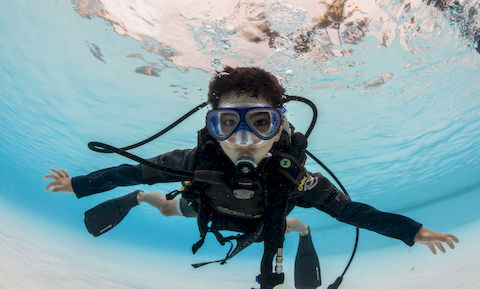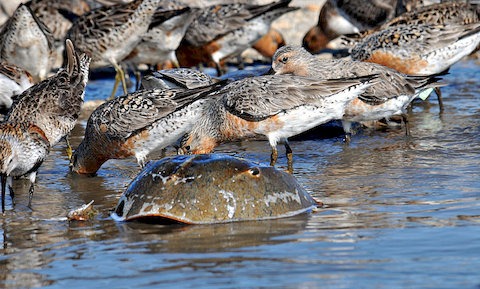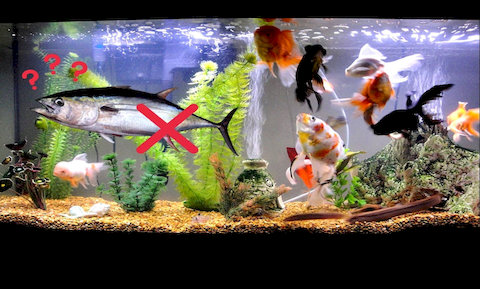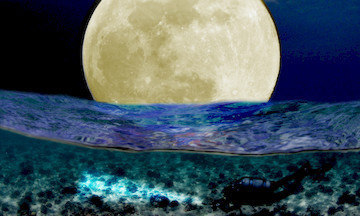Giant Squid and Kraken Myths Versus Facts
 The giant squid has inspired countless myths over many centuries. Based on the appearance of giant squids, it's not hard to see why. They look like monsters!
The giant squid has inspired countless myths over many centuries. Based on the appearance of giant squids, it's not hard to see why. They look like monsters!
In recent years, the stereotypes have persisted through the publishing of books such as Beast (1991) and the production of movies such as the second Pirates of the Caribbean (2006), as well as fake videos on youtube.
As is human nature, the earliest giant squids' stories probably started with real sightings. Statistically, sailors would have seen only dead carcasses.
They might have also seen scars on sperm whales and speculated as to what could cause such injuries to such massive mammals. Over time, stories about giant squids grew more and more grandiose and fantastic, becoming myths and legends.
Giant Squid and Kraken Historical Myths
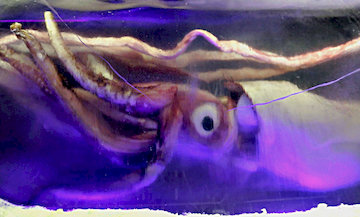 Even today, we know little about giant squids. Nonetheless, we are here to separate the facts from the fiction. We are busting some longstanding myths about these mysterious cephalopods. However, although they do not live up to their legends in many ways, giant squids are even more interesting than their legends in other ways.
Even today, we know little about giant squids. Nonetheless, we are here to separate the facts from the fiction. We are busting some longstanding myths about these mysterious cephalopods. However, although they do not live up to their legends in many ways, giant squids are even more interesting than their legends in other ways.
Norwegian and Greenlandic fisherman told tales of the Kraken, a giant-tentacled sea monster that would grab sailors off of boats and bring them to the depths.
The only warning sign was an increase in fish, which would be scared to the surface by the ascending beast. Purported sizes for the Kraken were up to 2.4 kilometres (1.5 miles) across.
The Kraken is not the only legendary monster inspired by the giant squid. The Greeks called it Scylla, which you may recognize from Homer's epic poem, The Odyssey, or the Hydra of Hercules fame. Furthermore, Jules Verne, in Twenty Thousand Leagues Under the Sea, described a specimen that could drag a 5000 tonnes (+5500-ton) ship underwater.
Giant Squid Facts
 In the 1850s, the giant beak of a giant-squid washed ashore. As the beak and later-acquired parts were analyzed, the Kraken of legend was finally revealed to be the newly-named Architeuthis dux ("ruling squid"), better known today as the giant squid.
In the 1850s, the giant beak of a giant-squid washed ashore. As the beak and later-acquired parts were analyzed, the Kraken of legend was finally revealed to be the newly-named Architeuthis dux ("ruling squid"), better known today as the giant squid.
The youngest legend dates back to just before this, in 1848, when a giant squid was purportedly a 30 metres (100-foot) sea monster.
The population of giant squids is not one, or even several. Although humans rarely observe them, they are not rare at all. In fact, they might number in the millions.
The reasoning behind that estimate is the fact that sperm whales are known to eat giant squids, and there must be vast numbers of giant squids in the oceans to support global sperm whale populations.
What do we know about giant squids
Even though giant squid reproduction is not understood, they must be very successful at it. Giant squids inhabit every non-polar ocean and, as previously mentioned, support their regional sperm whale populations.
Strangely, there is only one species of giant squid, and every specimen examined so far (from around the entire world) has been genetically similar.
But these results cannot be taken for granted. We have a considerable lack of giant squid specimens to analyze, as well as to cross-reference the few analysis we have.
What size a giant squid can reach
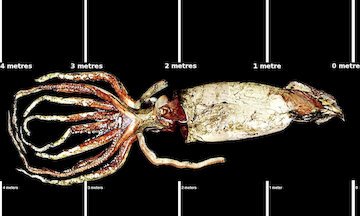 The giant squid can probably only grow to 13 or 15 metres (40 or -50 feet) in length while it is still alive. It might not be as impressive as the legends it has inspired, it's not small. The next time you see 4 cars bumper to bumper, imagine it as a stretched-out squid.
The giant squid can probably only grow to 13 or 15 metres (40 or -50 feet) in length while it is still alive. It might not be as impressive as the legends it has inspired, it's not small. The next time you see 4 cars bumper to bumper, imagine it as a stretched-out squid.
If it washes ashore, the sun will dry out a giant squid's rubbery body, causing it to stretch out (grow longer) after death. Therefore, the reported sizes of beached carcasses do not accurately reflect how long giant squids can grow.
There are a few reasons why accurate size estimates are not available. First of all, humans rarely observe living giant squids. Second, dead specimens are often only fragments, not complete bodies. And, third, as stated before, deceased specimens will stretch out after death.
Are Giant Squids agressive?
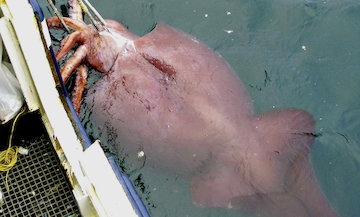 Observations suggest that giant squids are not aggressive toward humans. They are active predators, yes, but they have only been observed attacking their direct prey.
Observations suggest that giant squids are not aggressive toward humans. They are active predators, yes, but they have only been observed attacking their direct prey.
They also eat slowly. After attacking horizontally (not from underneath as in the legends) and trapping their prey with their tentacles, giant squids take their time consuming their meals in small bites. This is because the esophagus of a giant squid passes through its brain. If it swallows too large of a bite, it can give itself brain damage!
Giant squids are also opportunistic. When a crown jellyfish is attacked, it uses bioluminescence to attract predators that are larger than its attacker. Giant squids are not known to eat jellies, but they will attack and eat the jellies' distracted predators.
Giant squids have epic battles with sperm whales
 Giant squids have been depicted battling sperm whales because of the serrated, circular scars they leave on these massive mammals.
Giant squids have been depicted battling sperm whales because of the serrated, circular scars they leave on these massive mammals.
But, make no mistake. The sperm whales are the predators, and their stomach contents suggest excellent success hunting, eating, and digesting these cephalopods.
In regards to battling other members of their species, giant squids may or may not be cannibals. Although the stomach of one giant squid had giant squid remains in it, that alone is not conclusive. Other giant squid stomachs, after all, have been analyzed that have not contained giant squid remains. Furthermore, the number of analyzed stomachs must be a relatively low number.
Giant Squids Researches and References
If you want to know more about giant squids, take a look at the video (beside or above depending your device).
Below are few links we have used as references.
- How we found the giant squid by Edith Widder (TED youtube video)
- Kraken Project; In search of the Giant Squid, Planet Doc Documentaries
- Giant Squid on Wikipedia
- Quest for the real life kraken
- Voyage of the giant squid
- The giant squid dragon of the deep
- Freaky facts about giant squid
The photo representing a battle between a giant squid and a sperm whale is a picture taken inside the New York's Museum of Natural History.
This picture is a plaster representation! It is not a "real" fight in real life.
Last, but not Least
If you would like to receive interesting content like this in your email Inbox, subscribe to our newsletter.
In addition to our monthly newsletter, we will send you our weekly e-Bulletin with one fascinating topic, like today's article above. There will be no advertising nor sales pitch.
We also want to thank Youtube and Wikipedia commons for some amazing images and videos on this page!
Thanks for reading, and if you wish, see you next week!
The Research and Media Team at Scotty's.
More Pictures About Giant Squids




















